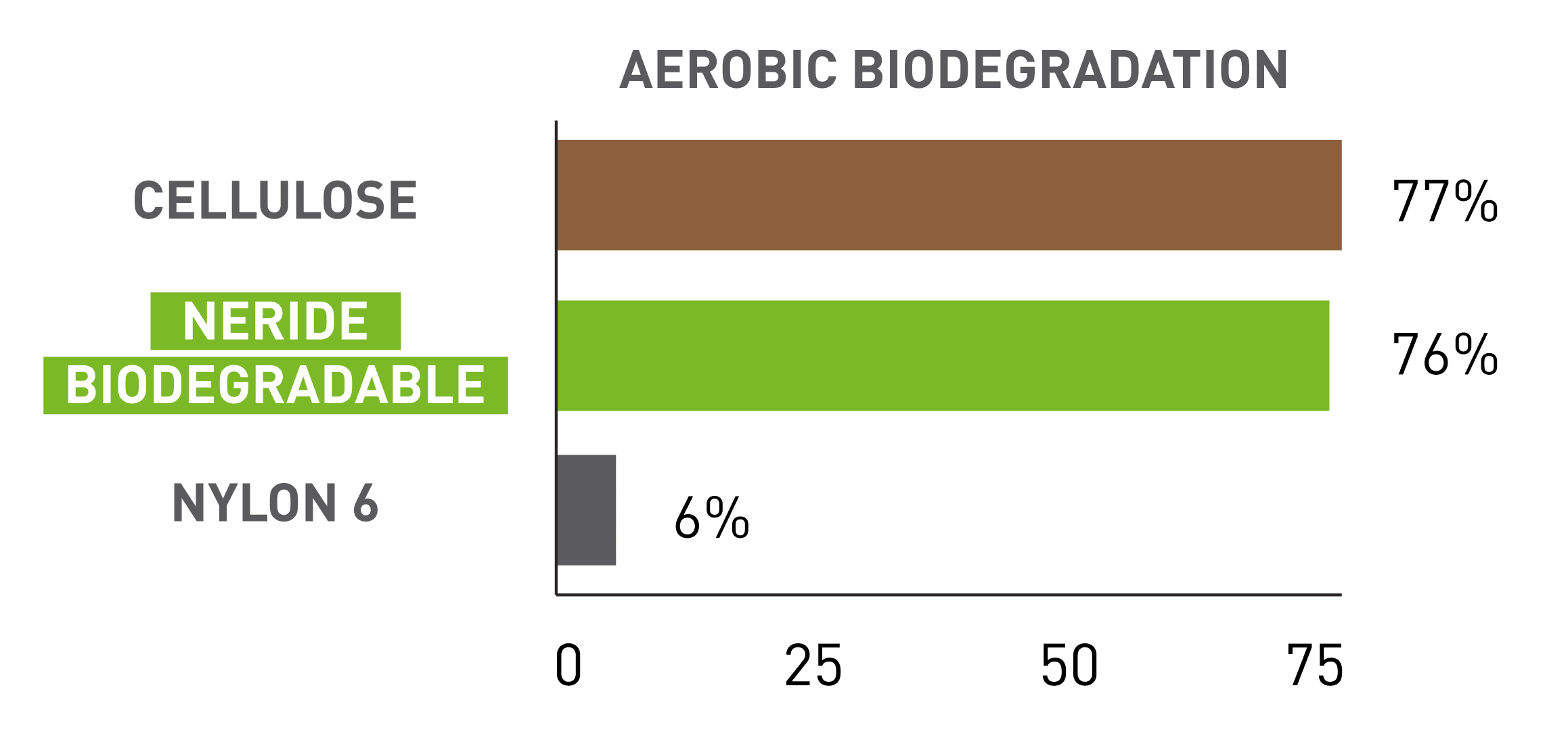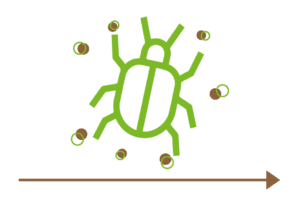FACING THE CHALLENGES OF SUSTAINABILITY
Globally, the fashion industry is responsible for 10% of greenhouse gas emissions.
The textile industry is the second most polluting industry on the planet, contributing 20% of the world’s wastewater.
The textile industry is the second most polluting industry on the planet, contributing 20% of the world’s wastewater.
Sorting, collecting and recycling used or unsold clothing is a very complicated task, due to the many blends of man-made and natural fibers used in today’s garments. Today, there is no technology to solve this problem, and most textile waste ends up in landfills.


What is NERIDE® BIO?
NUREL proposes a solution for nylon textiles that end their useful life in landfills.
Thus, NERIDE BIO is a nylon 6 yarn that biodegrades at the end of its life cycle, transforming into biomass and methane which, when properly captured, becomes green energy.
NERIDE BIO biodegrades in both aerobic and anaerobic* environments.
Unlike other fibers, NERIDE BIO is not decomposed by oxygen or UV rays, as it is not oxo-degradable. In addition, NERIDE BIO maintains the physical properties and shelf life of PA6 and only degrades when it comes into contact with an active biological environment. It is processed by standard PA6 production methods.
What is NERIDE® BIO?
NUREL proposes a solution for nylon textiles that end their useful life in landfills.
Thus, NERIDE BIO is a nylon 6 yarn that biodegrades at the end of its life cycle, transforming into biomass and methane which, when properly captured, becomes green energy.
NERIDE BIO biodegrades in both aerobic and anaerobic* environments.
Unlike other fibers, NERIDE BIO is not decomposed by oxygen or UV rays, as it is not oxo-degradable. In addition, NERIDE BIO maintains the physical properties and shelf life of PA6 and only degrades when it comes into contact with an active biological environment. It is processed by standard PA6 production methods.

Biodegradable properties
- This product has been designed for biodegradation in landfill and valorization into green energy (methane gas).
- Anaerobic biodegradation* in landfill according to: ASTM D5511.
- Aerobic biodegradation* in soil according to ISO 17556: 2012.


NERIDE BIO's carbon footprint impact
- The end-of-life of any material is fundamental to the calculation of the carbon footprint, which implies that it must be analyzed according to each disposal scenario.
- The largest reduction in NERIDE BIO’s carbon footprint is obtained by managing its waste in landfills, where the resulting methane is managed and converted into green energy, providing approximately a 15% carbon reduction.
NERIDE BIO's carbon footprint impact
- The end-of-life of any material is fundamental to the calculation of the carbon footprint, which implies that it must be analyzed according to each disposal scenario.
- The largest reduction in NERIDE BIO’s carbon footprint is obtained by managing its waste in landfills, where the resulting methane is managed and converted into green energy, providing approximately a 15% carbon reduction.

Anaerobic biodegradation

Anaerobic biodegradability according to ASTM D551. After 751 days: up to 84,2% biodegradation
Aerobic biodegradation
- In case of improper disposal of textile waste, NERIDE BIO will also biodegrade in the soil.
- Aerobic biodegradation is the degradation of organic matter by microorganisms in oxygen containing environments such as soil.
- The aerobic certification of NERIDE BIO, according to ISO 17556:2012, establishes a biodegradation of 76% after 90 days in active soil similar to that of cellulose fibers.
- Under the same conditions, NERIDE BIO biodegrades at the same rate as cellulose.






